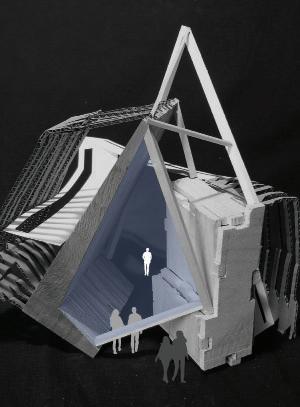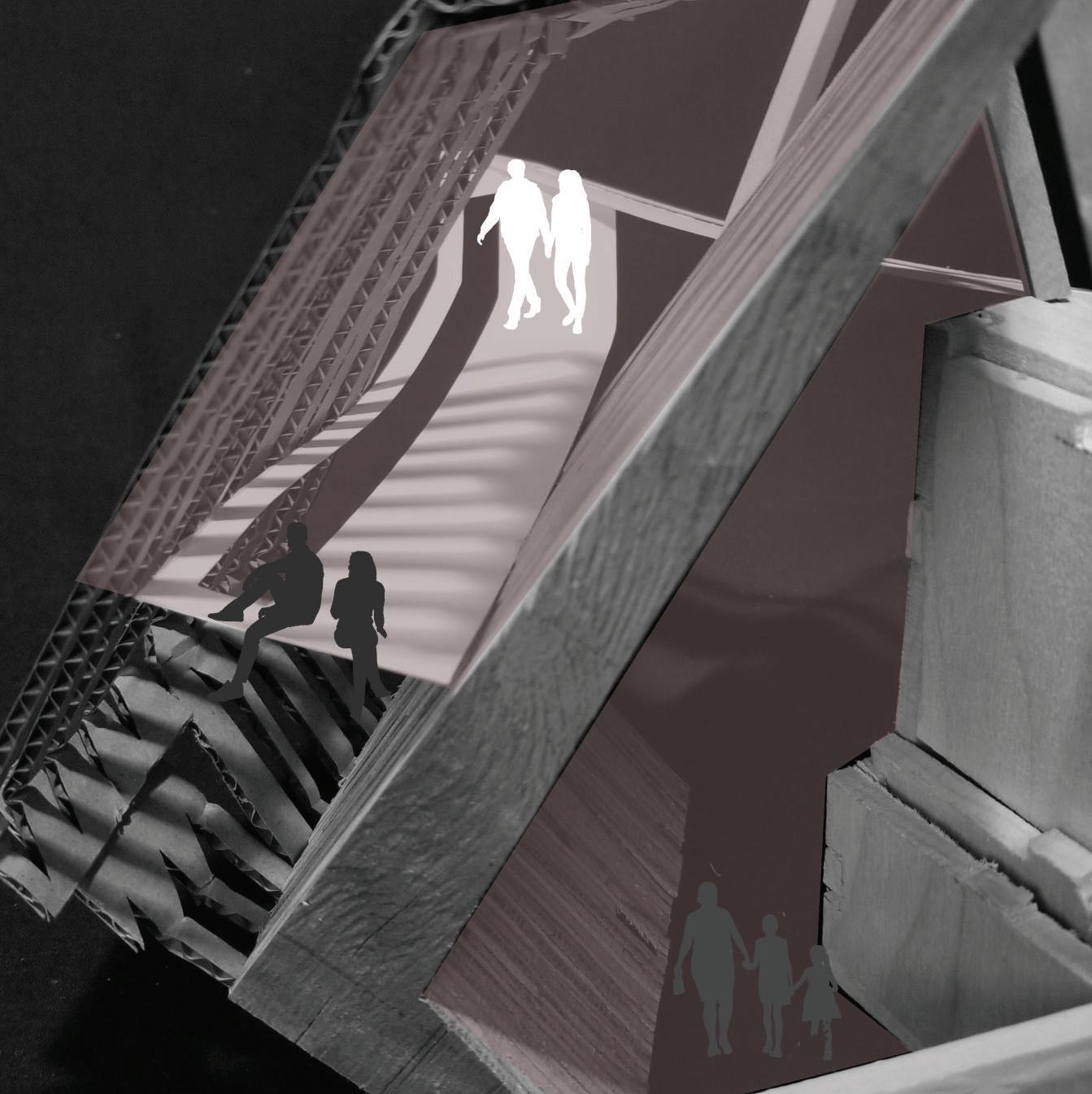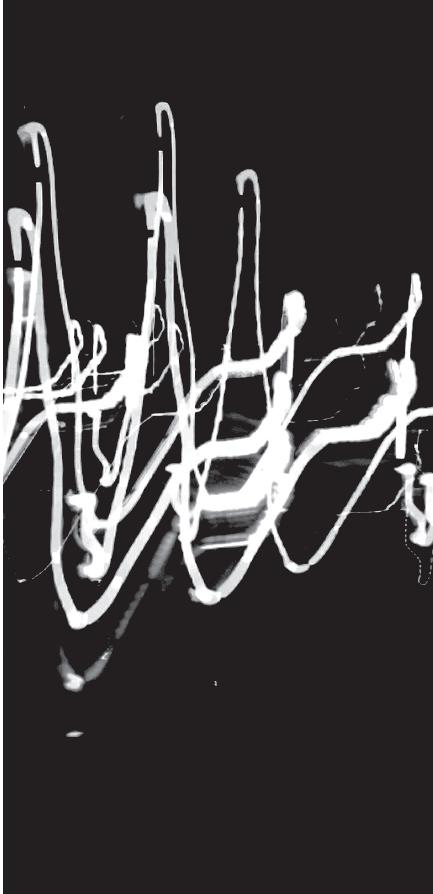
1 minute read
Cumulonimbus
“Cumulonimbus” started with the abstract interpretation of original long-exposure images as potential light fixture designs. The fixture’s form, suspension techniques, functional operations, and the path of the prescribed LED strip were all taken into consideration. The final design mimics a thunder cloud. Its sporadic form of plastic wrap is supported by flat beading wire. As well as being a study in form, it explores the impact of the clear plastic material on the quality of light as it is reflected off of and shone through a clear yet dynamic surface.
Below: inspiration photos, preliminary sketches
Advertisement
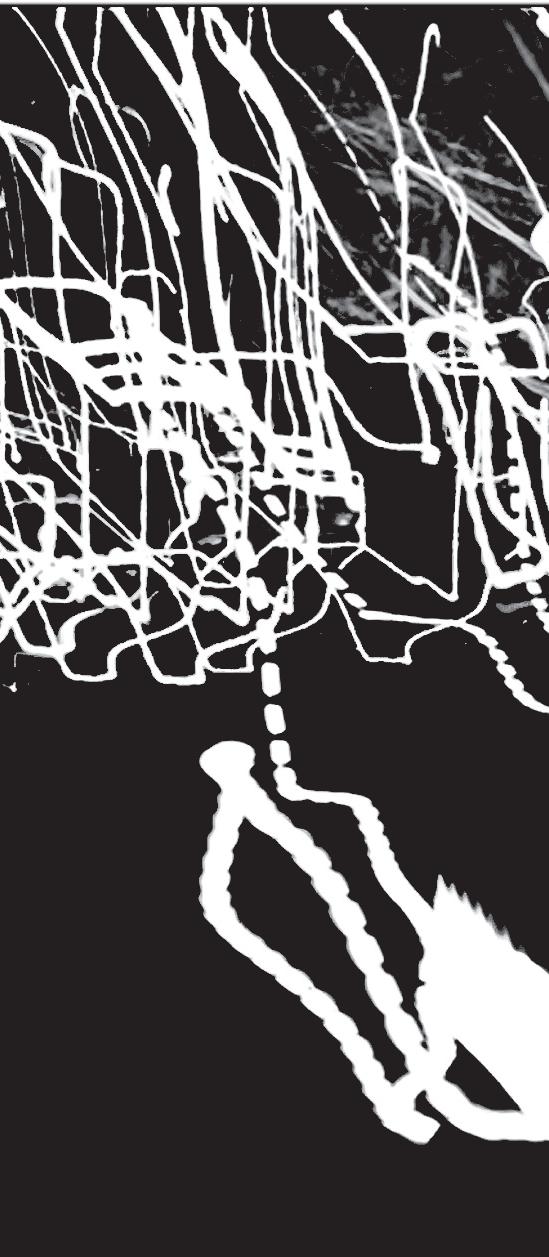
Following pages: light fixture photos
Bloom
“Bloom” experiments with how a single tectonic element, in this case frames, can be used to craft a space by shading, filtering, and screening light. Trace paper was used in various forms to add to this exploration. The trace paper, depending on the instance utilized, either screens the light, thereby creating a sense of closure and privacy, or casts unique patterns of shadows on the space below. The shadows within the trace paper itself add a greater depth and texture, something that is also seen in “Bloom’s” exterior plane, made from basswood, as the layered frame pieces enhance texture and add a vertical directionality.
Left and below: combined model
Below: first iteration model
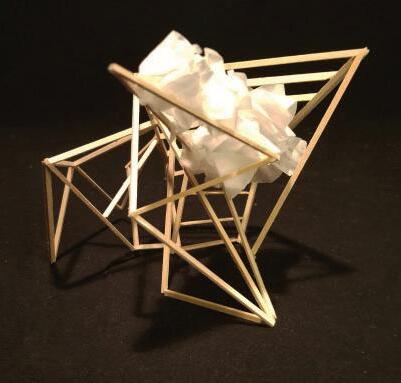
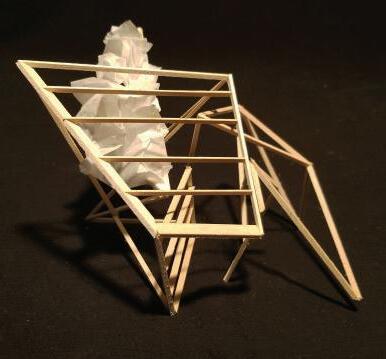

Right:
Right: combined model
Following page: cross section
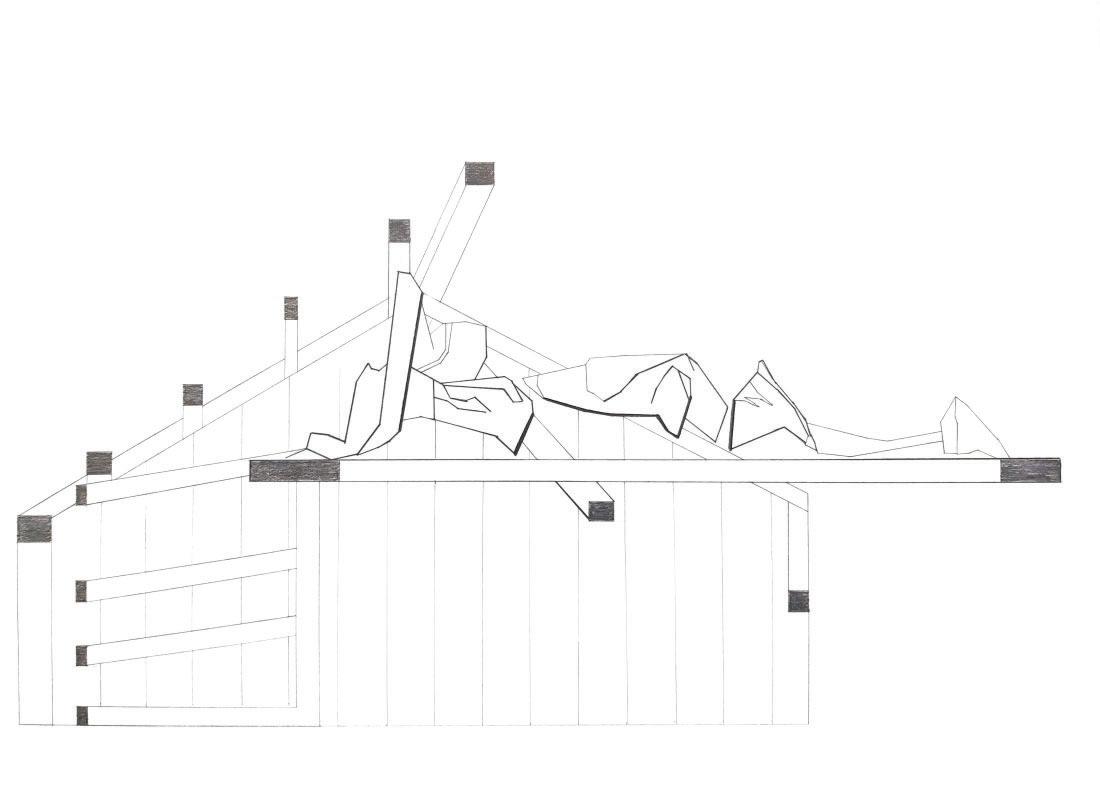

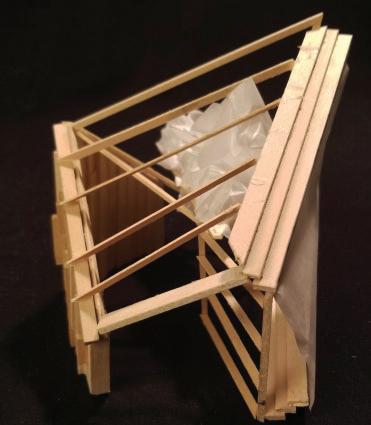

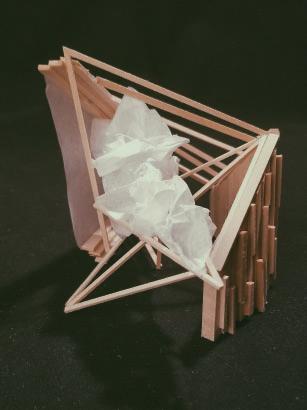


Passage
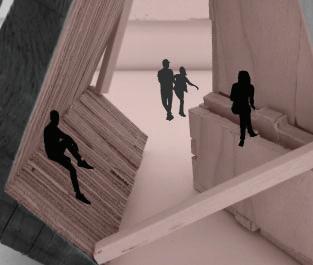
“Passage”, formed with the inclusion of two prescribed wooden masses, emphasizes the transition from one space to another and the experiences that happen within that moment. More specifically, the spatial conditions focused on were “through” represented in indigo, “within” in cyan, “around” in green, “between” in salmon, and “beyond” in magenta. Additional tectonics and materials were added to compliment “Passage’s” function and to enrich it as a distinct habitable space.

The mass corners emphasized the transition from one space to another and the experiences these corners were “through”, “within”, “around”, “between”, and “beyond”.
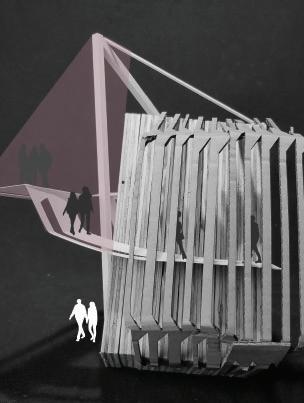
Below (white background): first iteration model

Below and following page (black background): final iteration model

